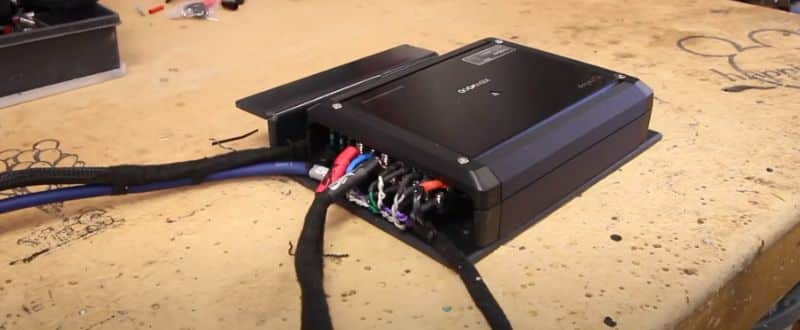5-channel amplifiers are testaments to the all-round and robust power that modern-day amplifiers can bring to the table. This versatile beast’s true potential lies dormant until there is bridging involved.
This process further consolidates power and creates a richer, more immersive audio experience.
I will focus on exploring how to bridge a 5-channel amp with practical steps to give you the right knowledge and approach to get the task done.
In This Article
Things to Check before Bridging
Make sure of some aspects to ensure your bridging process goes smoothly and is primed for optimal performance.
- Power Output: Your amp's power output should match your speakers and subwoofer's requirements.
- Impedance: Confirm that your amplifier can handle the combined impedance of all speakers and subwoofers when bridged.
- Terminal Identification: Look for the correct terminals for bridging on your 5-channel amp, often labeled as 'Bridged”, to avoid confusion and wiring errors.
Bridging 5-Channel Amp with 2 Speakers and 1 Sub
The two speakers and one subwoofer are the most common and recommended configuration for bridging a 5-channel amp. This technique transforms four channels into two powerful channels for the two speakers, and the other channel acts like a monoblock amp for the sub.
You will have to connect the first speaker’s positive lead to the first channel’s positive terminal and the negative lead to an adjacent channel’s negative terminal on the same side of rare or front. Then, do the same thing for the other speaker by bridging with two more terminals in the same way - connecting the positive lead to one channel’s positive terminal and the negative lead to another’s negative terminal on the same side.
Meanwhile, the subwoofer enters this setup via the last channel. This dedicated channel for the subwoofer maintains the balance between the nuanced highs and mids from the speakers and the deep by resonating lows from the subwoofer. You should connect the positive wire of the subwoofer to the fifth channel’s positive terminal and the negative wire to the negative terminal.

Understanding impedance is a critical aspect of this setup. If, for instance, your amplifier supports a minimum of 4 ohms per channel and each speaker has an impedance of 8 ohms, bridging them brings the impedance down to 4 ohms per bridged channel. Doing so will align with the amp’s capability and optimize the power distribution.
After doing the connection process, you should do the usual fine-tuning as per your preference. Then, you finally get the arrangement of a bridged 5-channel amplifier that offers a triad of audio channels and creates a well-rounded audio experience.
Can You Bridge the 5-Channel Amp in Any Other Configuration?
The versatility of a 5-channel amplifier allows for various bridging configurations. You will usually be able to connect two subs in a bridged manner with four channels and one speaker.
There is also an option to connect one speaker or sub to 2 terminals by bridging and connecting the remaining terminals to 3 subs or speakers normally. But none of these configurations meet the objective of bridging and not let you have it to its fullest. The recommended setup of bridging for two speakers and dedicating the fifth channel to a subwoofer remains the most effective way to unlock the amp's true potential.
The End
Bridging is a technique that requires understanding, precision, and a keen ear for detail. The recommended setup and the instructions will ensure your car audio system operates at its optimum by creating a harmonious blend of highs, mids, and lows.
I have presented the foundational principles of bridging a 5-channel amp. You can also open up a world of auditory exploration as you explore the bridging process more often.
Similar Articles You may Read:
I’m a car audio specialist with over five years of experience working with sound systems, including subwoofers, amplifiers, and speakers. As the lead contributor at CarAudioHunt.com, I create in-depth product reviews, installation guides, and audio tuning tips to help car owners upgrade their sound systems with confidence. My goal is to simplify complex setups and provide reliable advice for both beginners and seasoned enthusiasts.
